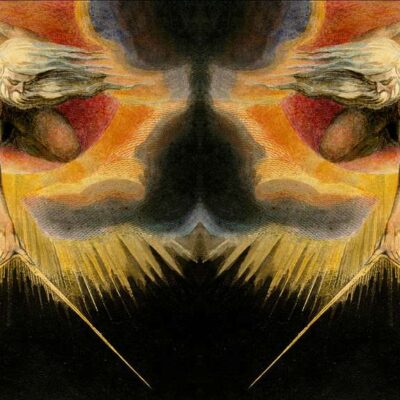William Blake

William Blake, was born in London, on November 28, 1757. He was an engraver, artist, poet, and visionary. He is the author of “Exquisite Lyrics in Songs of Innocence” (1789) and “Songs of Experience” (1794). These works were etched, printed, coloured, stitched, and sold, by the author with the assistance of his devoted wife, Catherine. Some of his best known lyrics today are “The Lamb,” “The Tyger,” “London,” and the “Jerusalem” lyric from Milton which over the yaers has become a national anthem of sorts.
Blake was one of six children from a Nonconformist family (dissenting Protestants) and grew up in Soho London in modest circumstances. He was educated at home by his mother, later he was to write “Thank God I never was sent to school, To be Flogd into following the Style of a Fool”. Even as a young boy Blake had visions and his life and works were intensly spiritual. Blake From chilhood Blake wanted to be an artist, so at the age of 10 , his parents sent him to drawing school, but eventually the costs proved to be prohibitive for a family of modest means, therefore at the age of 14 young William was apprenticed to a master engraver. At the age of 21 Blake left his apprenticeship and enrolled in the Royal Academy and started working as a indipendent engraver working on many and diverse publications, ranging from “Don Quixote” to periodicals such as “Ladie’s Magazine“. Eventually Blake became so well known that he recived commissions to engrave his own designs. During this period in 1780, Blake was witness to violent riots with that swept across London, with angry mobs setting light to houses, churces and prisons, one event in particular the burning of Newgate prison and scenes of uncontoled revolution, deeply affected the poet and later were a great source inspiration for “Europa” written in 1794 and “America” in 1793. In 1781 william fell in love with Catherine Sophia Boucher a pretty illiterate daughter of an unsuccessful small home produce farmer. They were married twelve months later, what seemed to be a very foolhardy decision turned out to be a highly satisfactory marriage. Blake taught Catherine to read and write, as well as to draw and colour. Catherine believed implicitly in William’s genius, she helped and supported him in everything he did with charming credulity untill his death in 1827. Regrettably blake was scarcely noticed in his own lifetime, no contemporary reviewed any of his works at the time and he was simply dismissed as a madman. Currently Blake is considered by many to be the earliest and most original of the Romantic poets, as well as one of the greatest British artists and line engravers, with many of his works on display worldwide.
